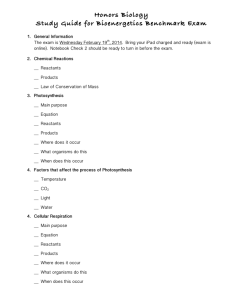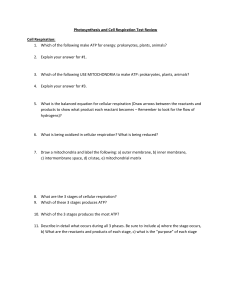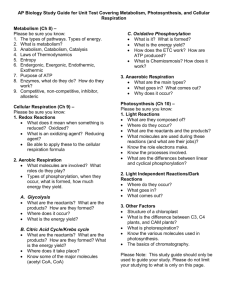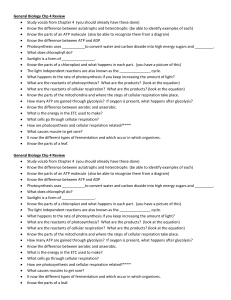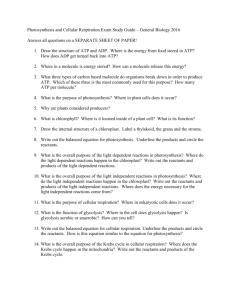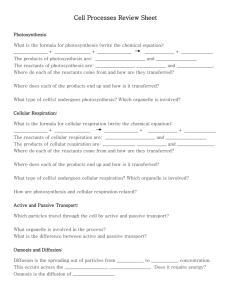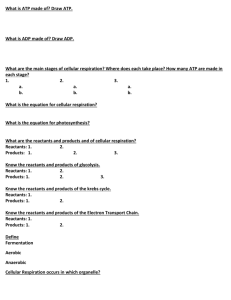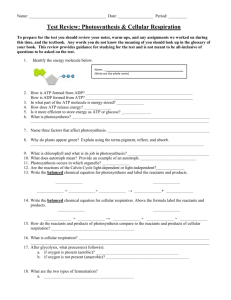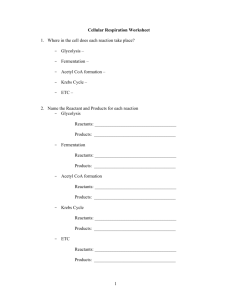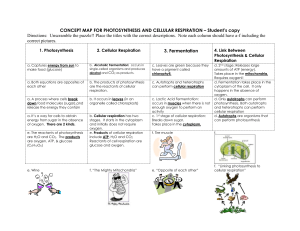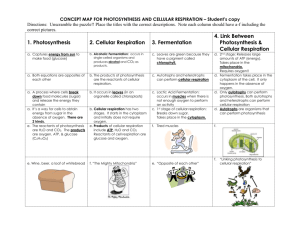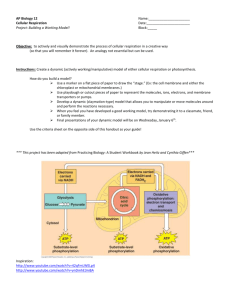Semester 1 Learning Targets
advertisement
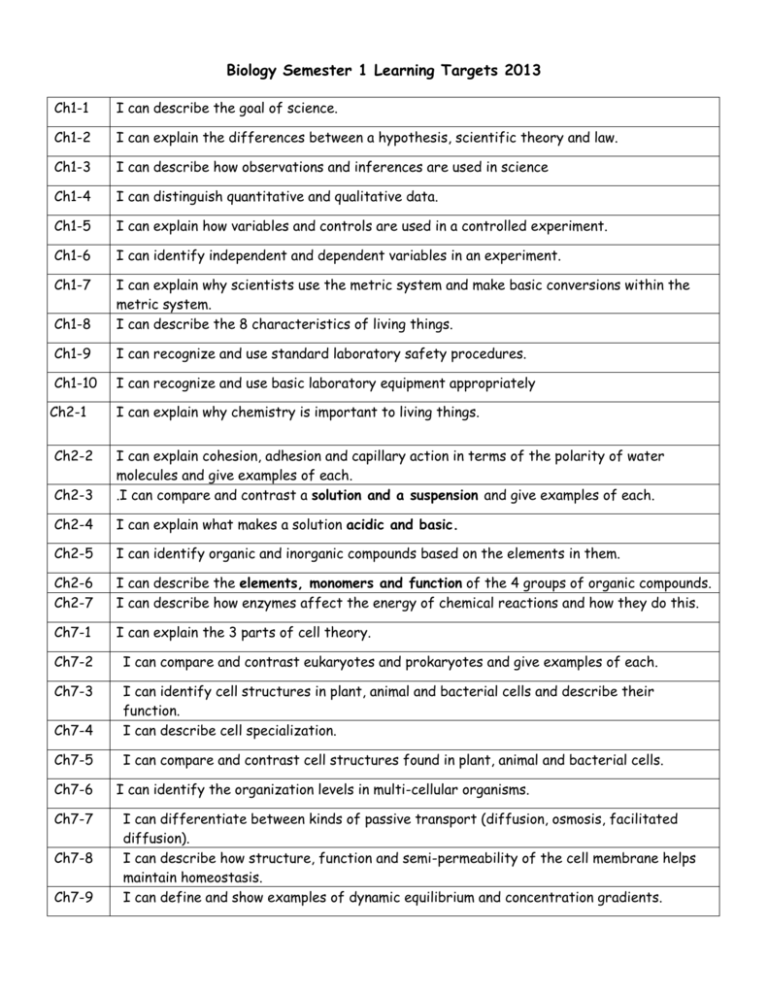
Biology Semester 1 Learning Targets 2013 Ch1-1 I can describe the goal of science. Ch1-2 I can explain the differences between a hypothesis, scientific theory and law. Ch1-3 I can describe how observations and inferences are used in science Ch1-4 I can distinguish quantitative and qualitative data. Ch1-5 I can explain how variables and controls are used in a controlled experiment. Ch1-6 I can identify independent and dependent variables in an experiment. Ch1-7 Ch1-8 I can explain why scientists use the metric system and make basic conversions within the metric system. I can describe the 8 characteristics of living things. Ch1-9 I can recognize and use standard laboratory safety procedures. Ch1-10 I can recognize and use basic laboratory equipment appropriately Ch2-1 Ch2-2 I can explain why chemistry is important to living things. Ch2-3 I can explain cohesion, adhesion and capillary action in terms of the polarity of water molecules and give examples of each. .I can compare and contrast a solution and a suspension and give examples of each. Ch2-4 I can explain what makes a solution acidic and basic. Ch2-5 I can identify organic and inorganic compounds based on the elements in them. Ch2-6 Ch2-7 I can describe the elements, monomers and function of the 4 groups of organic compounds. I can describe how enzymes affect the energy of chemical reactions and how they do this. Ch7-1 I can explain the 3 parts of cell theory. Ch7-2 I can compare and contrast eukaryotes and prokaryotes and give examples of each. Ch7-3 Ch7-4 I can identify cell structures in plant, animal and bacterial cells and describe their function. I can describe cell specialization. Ch7-5 I can compare and contrast cell structures found in plant, animal and bacterial cells. Ch7-6 Ch7-7 Ch7-8 Ch7-9 I can identify the organization levels in multi-cellular organisms. I can differentiate between kinds of passive transport (diffusion, osmosis, facilitated diffusion). I can describe how structure, function and semi-permeability of the cell membrane helps maintain homeostasis. I can define and show examples of dynamic equilibrium and concentration gradients. Ch7-10 Ch7-11 I can explain differences between isotonic, hypotonic and hypertonic solutions and predict effects on cells in each type of solution. I can explain the role of turgor pressure in plants. Ch7-12 I can describe active transport processes (endocytosis and exocytosis.) Ch7-13 I can describe the role of proteins in active and passive transport. Ch7-14 I can identify the parts of a light microscope and their function. Ch7-15 I can use proper technique to prepare a wet-mount of a sample and view it using the light microscope. I can explain why the sun’s energy is the major source of energy for life on earth. Ch8-1 Ch8-2 Ch8-3 Ch8-4 Ch8-5 Ch8-6 Ch8-7 Ch8-8 I can describe how ATP acts as energy carrying molecule for the cell and explain how ATP stores and releases energy. I can write the chemical equation for photosynthesis and explain how it shows energy transfer from the environment to living things. I can describe how autotrophs and heterotrophs obtain energy differently. I can compare the light-dependent reaction with the dark reaction (Calvin cycle) terms of location, reactants and products. I can describe importance of plant pigments in capturing light energy of varying wavelengths during photosynthesis. I can identify factors that affect the rate of photosynthesis. Ch8-9 I can describe leaf and chloroplast structure and identify where photosynthesis reactions take place. I can describe how carbon is cycled and recycled through earth systems. Ch9-1 I can name and describe the processes by which autotrophs and heterotrophs get energy. Ch9-2 Ch9-3 I can describe the process of cellular respiration as converting stored chemical energy into usable chemical energy. I can write the chemical equation for cellular respiration. Ch9-4 I can identify and describe the important cell structures of cellular respiration. Ch9-5 I can describe the location AND the reactants and products of glycolysis Ch9-6 Ch9-8 I can describe the location AND the reactants and products of anaerobic cellular respiration (lactic acid and alcoholic fermentation). I can describe the location AND the reactants and products of aerobic respiration (the Krebs cycle). I can describe the location and function of the electron transport chain. Ch9-9 I can compare the # of ATP molecules made in aerobic vs. anaerobic cellular respiration. Ch9-10 I can compare and contrast photosynthesis and cellular respiration. Ch9-11 I can describe situations in which the cell would need either quick energy or long term energy. Ch9-7 Ch10-1 I can explain why cells are small . Ch10-2 I can describe the main events of the cell cycle. Ch10-3 I can describe the main events occurring during interphase. Ch10-4 I can describe how the cell cycle is regulated. Ch10-5 I can explain how cancer cells are different from other cells. Ch10-6 I can describe causes of mutations and the significance of mutations. Semester 1 Midterm Exam 2013 60% = individual, closed-book exam on 12/16 40% = group, open-book lab practicum during exam period. (groups based on class rank) Studying Advice: 1. Don’t wait until a day or two before to study. There is simply too much information 2. Assemble the materials by unit. 3. Refer to the learning targets for each chapter. 4. You can use notes, labs or class WS’s to help you review. You should also use the old tests for example questions or to show you what I thought you should know about that target. I will place the chapter tests in a folder on the Biology web-page. 5. Collect all your tests. Put them in the order by chapter. PAPERCLIP them together (no staples please) and turn them in on exam day for extra credit!!!!



